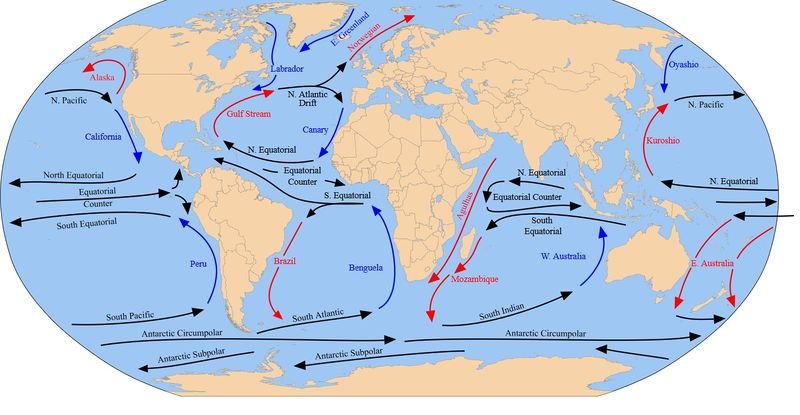JOIN OUR WHATSAPP GROUP. CLICK HERE
How does Coriolis force influence the movement of ocean currents
How does Coriolis force influence the movement of ocean currents Local winds have an impact on coastal currents. On the open ocean, surface ocean currents are influenced by a sophisticated global wind system. Understanding the Coriolis force and the Ekman spiral is necessary before one can comprehend how winds affect ocean currents.
The atmosphere would simply move back and forth between the poles (high pressure areas) and the equator (a low pressure area) if the Earth did not spin and remained fixed. However, because of the Earth’s rotation, air gets deflected. In the Northern Hemisphere and the Southern Hemisphere, respectively, the air deflects toward the right and toward the left, resulting in curved pathways. The Coriolis effect is the name given to this deflection. It bears the name Gaspard Gustave de Coriolis (1792–1843), a French mathematician who investigated how energy is transferred in spinning systems like waterwheels. (Ross, 1995).
What is a Coriolis force
The Coriolis force is a fundamental force that arises from the rotation of the Earth. It acts on all moving objects, including ocean currents, and plays a significant role in shaping their behavior.
The Coriolis force is a result of the Earth’s rotation on its axis. As the Earth spins, it causes objects moving in the atmosphere or oceans to be deflected to the right in the Northern Hemisphere and to the left in the Southern Hemisphere. This deflection is known as the Coriolis effect.
How Coriolis force influences the movement of ocean currents
The Coriolis force is an effect that is created by the rotation of the Earth, which causes moving objects to deflect to the right in the Northern Hemisphere and to the left in the Southern Hemisphere. Coriolis force influences the movement of ocean currents in the following four ways:
- Direction of currents: The Coriolis force causes ocean currents to deflect to the right in the Northern Hemisphere and to the left in the Southern Hemisphere. This means that the direction of the ocean currents is influenced by the rotation of the Earth.
- Intensity of currents: The Coriolis force also affects the intensity of ocean currents. The deflection caused by the Coriolis force causes water to pile up on one side of the current, which creates a pressure gradient. This pressure gradient drives the flow of water, and the strength of the current is influenced by the pressure gradient.
- Formation of gyres: The Coriolis force is also responsible for the formation of large-scale ocean circulation patterns called gyres. The deflection of ocean currents caused by the Coriolis force creates circular motion in the ocean, which leads to the formation of gyres.
- Influence on climate: The movement of ocean currents is an important factor in regulating global climate patterns. The Coriolis force influences the movement of ocean currents, which in turn influences the distribution of heat around the globe.
Overall, the Coriolis force is an important factor in influencing the movement of ocean currents. Its effect on the direction and intensity of ocean currents, the formation of gyres, and the influence on climate make it a key element in the study of oceanography.

In conclusion, the Coriolis force plays a significant role in shaping the movement of ocean currents. It causes currents to bend, rotate, and form eddies, and it affects the direction of upwelling and downwelling. Understanding the Coriolis force is essential for understanding the behavior of ocean currents, which have a significant impact on weather patterns, global climate, and marine ecosystems.
How to Pass Agricultural Sciences Grade 11 with distinctions
One of the most significant accomplishments in your academic career is passing matric. It provides access to a wide range of post secondary options and employment possibilities. Use our best study advice to complete your matriculation, and you’ll succeed with flying colors.
- Attend class
- Ask questions
- Make notes
- Study
- Practise
- Study groups
- Extra class
- Motivation
- Complete assessments
- Prepare for the Exams in due time
Download Past Exam Papers & Memo per Province
- Department of Basic Education Grade 9 Exams
- Eastern Cape Papers and Memorandum
- Free State Papers and Memorandum
- Gauteng Papers and Memorandum
- KwaZulu-Natal Papers and Memorandum
- Limpopo Papers and Memorandum
- Mpumalanga Papers and Memorandum
- Northern Cape Papers and Memorandum
- North West Papers and Memorandum
Western Cape Papers and Memorandum
JOIN OUR TELEGRAM CHANNEL. CLICK HERE

Be the first to comment